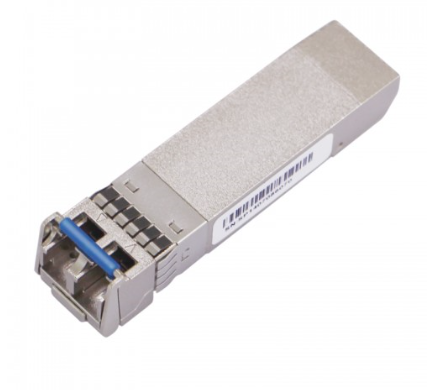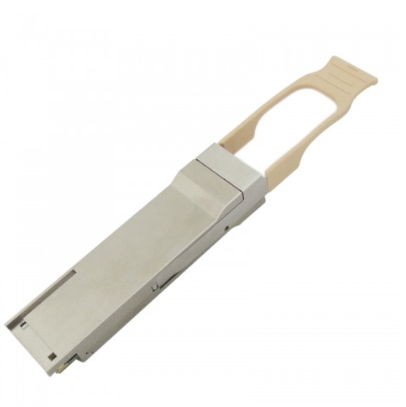- Related articles
- Optical Transceivers for Cisco N7K-M206FQ-23L= Switch
- Optical Transceivers for Cisco SG550XG-48T-K9-UK Switch
- What is PCI Express?
- Optical Transceivers for Cisco WS-C3650-48PS-S Switch
- All Cisco ONS-SI-2G-S1's information (List price, Specs, Datasheet PDF, Compatibility matr
- Optical Transceivers for Cisco SF300-24PP-K9-UK Switch
- Applicable to 10GBASE-LW Standard Optical Transceiver Models
- Optical Transceivers for Cisco N5K-C5548UP-DEMO Switch
- How to Remove PCIE Slot Cover?
- Optical Transceivers for Cisco WS-C3750V2-48TS-E Switch

Definition:
The enhanced small form-factor pluggable (SFP+) is an enhanced version of the SFP that supports data rates up to 16 Gbit/s. The SFP+ specification was first published on May 9, 2006, and version 4.1 published on July 6, 2009. SFP+ supports 8 Gbit/s Fibre Channel, 10 Gigabit Ethernet and Optical Transport Network standard OTU2. It is a popular industry format supported by many network component vendors. 10 Gbit/s SFP+ modules are exactly the same dimensions as regular SFPs, allowing the equipment manufacturer to re-use existing physical designs for 24 and 48-port switches and modular linecards.
QSFP is short for quad (4-channel) small form-factor pluggable. It is a compact, hot-pluggable transceiver also used for data communications applications. QSFP+ evolved as the standard to support 10Gb/s data rates per SFF-8436. Compared with QSFP+, QSFP products support Quarter Small Form-factor Pluggable with the different data rate so that there is no change in the product solution. Nowadays, QSFP+ gradually replace QSFP and is widely used by people as it can provide higher bandwidth.
Difference between SFP+ and QSFP+
SFP+ 10G
- 8GFC and 10Gbit/s 8.5G data rate
- SFP+ MSA Compliant
- Very low power consumption (<1W)
- With digital diagnostic monitor interface
- Operating temperature range 0 to 70 degrees Celsius
- 10G serial Electrical I/F
QSFP+
- QSFP+ MSA, SFF-8436 compatible
- Four independently addressable transmit and receive channels
- Highly compact: savings of 60% on edge and board usage compared to four comparable SFP+ modules
- Electrically hot-pluggable
- XFP-like latch mechanism for ease-of-insertion
- Digital Diagnostics Monitoring Interface. allows customer management and monitoring of key modules parameters, analogous to SFP+
- Optical connectivity via industry standard MPO/MTP terminated fiber ribbon
QSFP+ vs SFP+:
SFP transceivers are expected to perform at data speeds of up to five gigabits per second (5 Gbps), and possibly higher. Because SFP modules can be easily interchanged, electro-optical or fiber optic networks can be upgraded and maintained more conveniently than has been the case with traditional soldered-in modules. Rather than replacing an entire circuit board containing several soldered-in modules, a single module can be removed and replaced for repair or upgrading. This can result in a substantial cost savings, both in maintenance and in upgrading efforts.
The QSFP specification supports Ethernet, Fibre Channel, InfiniBand and SONET/SDH standards with different data rate options. QSFP+ transceivers are designed to support Serial Attached SCSI, 40G Ethernet, QDR (40G) and FDR (56G) Infiniband, and other communications standards. QSFP modules increase the port-density by 3x-4x compared to SFP+ modules. The (QSFP+) interconnect solution is designed for a multitude of markets and applications including switches, routers, Host Bus Adapters (HBAs), enterprise data centres, high-performance computing (HPC) and storage.
Comparision of QSFP+ and SFP+
| Package | Data Rate/Application | Wavelength | Distance | Interface |
| SFP+ | LC | |||
| QSFP+ | 40G Ethernet |
Conclusion:
SFP+ has a more compact form factor package than X2 and XFP. It can connect with the same type of XFP, X2 and XENPAK directly. The cost of SFP+ is lower than XFP, X2 and XENPAK. SFP+ modules can be described as 'limiting' or 'linear' types; this describes the functionality of the inbuilt electronics. Limiting SFP+ modules include a signal amplifier to re-shape the (degraded) received signal whereas linear ones do not. Linear modules are mainly used with the low bandwidth standards such as 10GBASE-LRM; otherwise, limiting modules are preferred. SFP+ also introduces Direct Attach for connecting two SFP+ ports without dedicated transceivers.
QSFP+ is an evolution of QSFP to support four 10 Gbit/sec channels carrying 10 Gigabit Ethernet, 10GFC FiberChannel, or QDR InfiniBand. The 4 channels can also be combined into a single 40 Gigabit Ethernet link.







































































